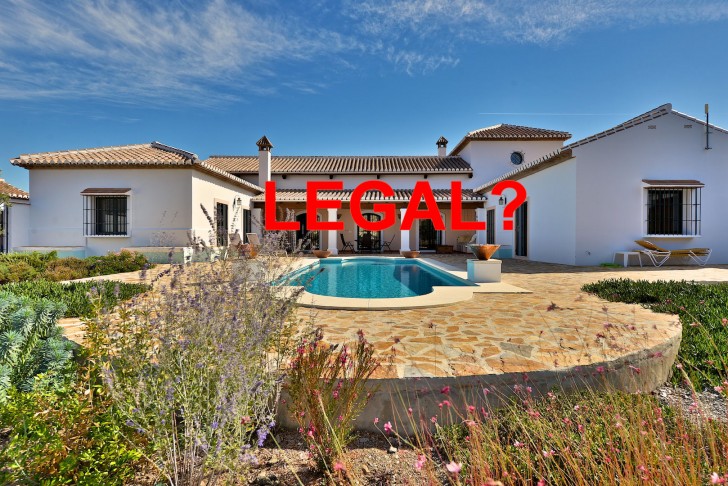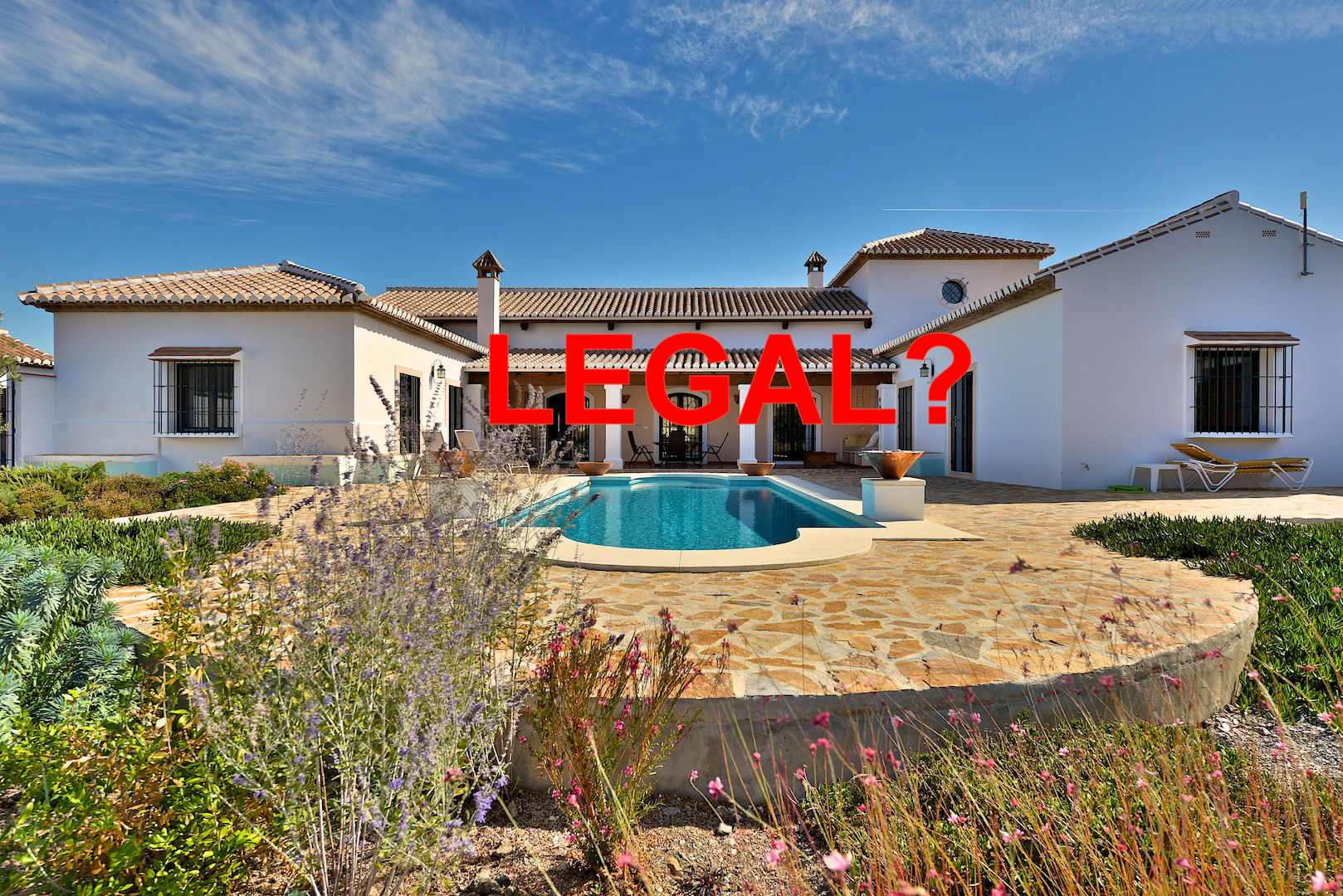Since the famous LOUA (urban planning law) for Andalusia was published in 2002 building on the countryside has been severely restricted. Over the years many amendments and regulations have been added to explain how the law needs to be executed. For properties on rustic land (suelo no urbanizable) this has rather large implications. Many home owners are not aware of this until they try to sell their houses. We will try to give some insight on the effects in this article.

When focusing on country properties (building on rustic land) we can state that since the publication of the LOUA it has become extremely difficult to obtain a building licenses. In short, the only building that is permitted is either related to agricultural exploitation, for instance farmhouses, barns or stables, or related to a public or tourism use, think of B&B’s or rural hotels. A more extensive explanation on what is permitted can be found in our earlier blog: What can you build on rustic land in Andalusia.
What building is considered illegal in Andalusia?
Separate from what type of building is allowed the question was raised how to handle all the illegal building on the countryside. In fact, what is considered as illegal building? Well, that is fairly simple, illegal refers to all building that took place without a proper building license. The word ‘proper’ meaning that the license coincides with the actual building that has appeared. To give an example of the last, if you had a license for a ‘casa de apero’ which is a shed or a barn, you are not allowed to convert this into a house (vivienda). Even if you have respected the approved m2, the license has been given for the use of storage, not for the use as a home. The use of a house is certified with a ‘licencia de primera ocupación’, a license of first habitation. Property owners might not even know whether these documents were issued. The property might have been transferred several times and ‘in the old days’ not all solicitors found it necessary to check on these. An easy way to check how legal your country house is, is to apply for a ‘certificado de no infracciones urbanísticas’ at your local town hall. It is basically a declaration from the local authorities stating there are no urban infractions, meaning the building and the use at date are legal in their perspective.
Legalizing illegal country properties in Andalusia
Looking at the above stated, could we derive that houses lacking the building license, the license of first habitation or ‘the certificado de no infracciones’ have to be demolished? No, thankfully, no! There are still several ways to legalize illegal properties. The first thing to establish is the classification of the land. We keep it simple in this blog and divide into two categories: Land without any special protection and land with some kind of special protection.
Legalize country properties on land with no special protection
On this type of land an urban infraction prescribes after 6 years. This means that if the authorities haven’t acted before they can no longer fine nor can they give a demolition order. There is some unclearity still in whether they can deny the use and demand for legalization. The process of legalization consists of presenting at least the following documentation at the planning department of the town hall: an official satellite photograph (ortofoto) proving the building is over 6 years old, floor plans drawn up by an architect and approved by the college of architects, copy of the deed and copy of passport/NIE of the owner. More documentation might be asked for depending on each individual situation. When approved the house has been legalized ‘fuera de ordenación’ or ‘asimilado a fuera de ordenación’. In another blog article we will go into detail to explain the difference between these terms. There are some costs involved. Next to the architects fee you would have to take into account the local taxes for the legalization.
Legalize country properties on protected land
In October 2006 Andalusia the rezoning in different areas (urban vs rustic and protected vs unprotected) has been approved. This date is quite important in order to establish whether houses in these areas can be legalized. New amendments on the LOUA state that urban infractions on protected land will not prescribe. To make this issue a little bit more complicated, at the time of the re-zoning the period for an urban infraction to prescribe was 4 years. Adding 1+1 together, the following rule is now applied: Illegal property on protected land can only be legalized if it can be proved that the building was finished before October 2002. The same legalizing procedure as before mentioned is then applicable.
Once you have the official communication from the town hall you can take this to the notary and afterwards to the land registry to finalize the process of legalization. The property in it’s current dimensions will be added to the deed and appear in the ‘nota simple’.
Conclusion, is your country property legal?
To conclude, the documents neccessary to prove your country house is legal or legalized are coming from 2 sources:
The first source is the Notary/Registry – With your deed (escritura) you can prove legal ownership of the property with dimensions as described in the ‘escritura’. The ‘nota simple’ from the land registry shows whether or not there are any claims on the property from third parties.
The second source is the Local Authority – Either through the ‘certificado de primera ocupacion’ or through a specific certificate from the town hall (certificado de no infracciones, certificado de prescripción, certificado de asimilado a fuera de ordenación,….) you can prove the right to use the building as a house.
Please note that this article is a guide only. The exact rules and regulations can be found in the LOUA. We strongly recommend you to check with your sollicitor what the implications are for your property.
Anita Schmidt | 5th December 2013

